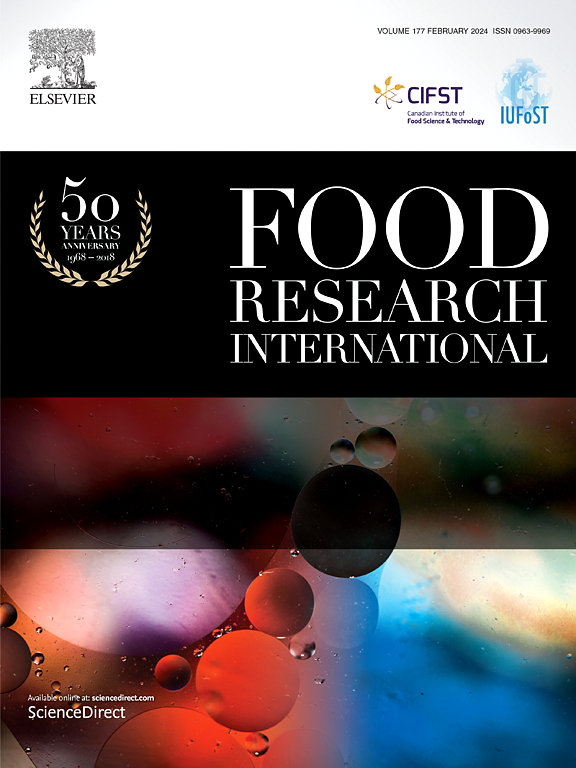Characteristics, immobilization of linoleic acid isomerase from Bifidobacterium breve and its application in rice bran oil
IF 7
1区 农林科学
Q1 FOOD SCIENCE & TECHNOLOGY
引用次数: 0
Abstract
The purpose of this paper is to reduce the acid value of rice bran crude oil and make a new rice bran oil (RBO) with conjugated linoleic acid (CLA). Linoleic acid isomerase from Bifidobacterium breve was immobilized on a magnetic nanoflower carrier of Fe3O4-SiO2-NFs. Molecular docking simulations were performed to investigate the interaction and binding mode conformation between isomerase and linoleic acid (LA) molecules by using computer software. This isomerase was used in isomerization reaction of high acid value RBO. Under the optimal enzymatic isomerization conditions, the conversion rate of LA was 62.13 %. The content of c9-CLA and t11-CLA in the product of enzymatic isomerization reaction was 23.50 ± 0.25 %. After six repeated uses, the relative activity of the immobilized enzyme remained above 70 %. Esterification reaction was performed from monoacylglycerol and RBO with CLA under the catalysis of magnetic immobilized lipase. The CLA glyceride content was 14.09 ± 0.53 % in new RBO product. The acid value of RBO decreased to 0.31 ± 0.15 mgKOH/g, and the peroxide value was 1.03 ± 0.14 mmol/kg. It may provide a sustainable pathway for RBO refining that combines deacidification with CLA-functionalization.

短双歧杆菌亚油酸异构酶的特性、固定化及其在米糠油中的应用
本文旨在降低米糠原油的酸值,利用共轭亚油酸(CLA)制备新型米糠油(RBO)。将短双歧杆菌亚油酸异构酶固定在Fe3O4-SiO2-NFs磁性纳米花载体上。利用计算机软件进行分子对接模拟,研究异构酶与亚油酸(LA)分子之间的相互作用和结合模式构象。该异构酶用于高酸值RBO的异构化反应。在最佳酶异构化条件下,LA的转化率为62.13%。酶促异构化反应产物中c9-CLA和t11-CLA的含量为23.50±0.25%。经6次重复使用后,固定化酶的相对活性保持在70%以上。以单酰基甘油和RBO为原料,在磁性固定化脂肪酶的催化下与CLA进行酯化反应。新RBO产品CLA甘油酯含量为14.09±0.53%。RBO的酸值为0.31±0.15 mgKOH/g,过氧化值为1.03±0.14 mmol/kg。这可能为脱酸与cla功能化相结合的RBO精制提供一条可持续的途径。
本文章由计算机程序翻译,如有差异,请以英文原文为准。
求助全文
约1分钟内获得全文
求助全文
来源期刊

Food Research International
工程技术-食品科技
CiteScore
12.50
自引率
7.40%
发文量
1183
审稿时长
79 days
期刊介绍:
Food Research International serves as a rapid dissemination platform for significant and impactful research in food science, technology, engineering, and nutrition. The journal focuses on publishing novel, high-quality, and high-impact review papers, original research papers, and letters to the editors across various disciplines in the science and technology of food. Additionally, it follows a policy of publishing special issues on topical and emergent subjects in food research or related areas. Selected, peer-reviewed papers from scientific meetings, workshops, and conferences on the science, technology, and engineering of foods are also featured in special issues.
 求助内容:
求助内容: 应助结果提醒方式:
应助结果提醒方式:


